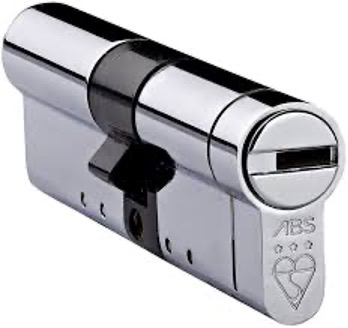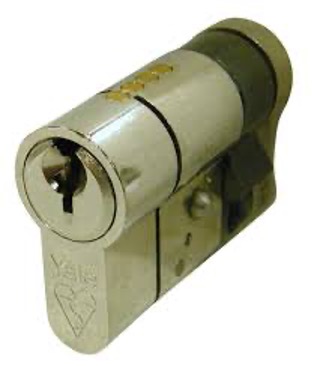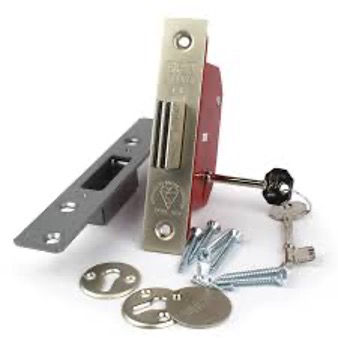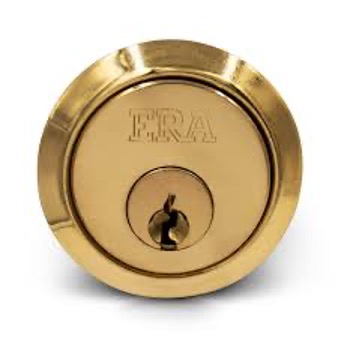 The big question people usually ask when purchasing anything is how much it costs.
The big question people usually ask when purchasing anything is how much it costs.
The cost of a product is a factor because it all comes down to affordability for an individual. In this article, we will answer some of the most important questions a customer would need to know from a locksmith before the attendance of the locksmith at the property to carry out a lock change.
As an overview labour and materials are as follows. This is based on expert opinion and conclusion on a lock replacement.
Standard Lock replacement should cost between £73.00 and £115.00 plus VAT if applicable.
British standard lock replacement should cost between £94.00-£140.00 plus VAT if applicable.
3 Star TS007 diamond grade lock replacement should cost between £102.75-£177.50 plus vat if applicable.
The Locks & Locking System
 The cost of a lock change all depends on what type of lock or locking system you have on your door, below are the most common types of locks on the front doors and nearly every UK home or business:
The cost of a lock change all depends on what type of lock or locking system you have on your door, below are the most common types of locks on the front doors and nearly every UK home or business:
- Euro Cylinder: A euro cylinder is a type of lock mechanism commonly used in door hardware that allows for different locking actions with the turn of a key, known for its barrel shape and versatility in key changes.
- Mortice Lock: A mortice lock is a lock set recessed inside the door’s edge, requiring a pocket—the mortice—to be cut into the door where the lock is fitted, providing a high level of security.
- Rim Cylinder: A rim cylinder is a locking mechanism mounted on the surface of a door, usually used with night latches, and operates with a long tailpiece extending into the door to activate the lock.
They also come in different sizes, but this doesn’t affect the cost too much, if at all. Your Secure Locksmiths advise that you familiarise yourself with the style of lock you have in your door just in case one day you need to call out a local emergency locksmith, this will also allow you to name and describe the lock to the local locksmith over the phone so you can be assured the quote your getting is as close to accurate as possible.
Locksmiths will generally charge slightly more than trade and DIY stores such as B&Q, Wickes, and Screwfix for example. This has to do with carrying the parts on board and emergency callouts. The cost of the Lock also depends on what type of security type rating you would like to fit.
Locking Standards
 If you would like the lock to comply with insurance standard BS3621 then the lock should have the recognisable kite mark stamped on it. In this case, you should expect to pay between 40%-100% more, compared to a standard-type rating cylinder. Other be type of material and branding. The same applies if you wish to use a lock with the highest grade of security which is visible with the insurance-approved kite mark on mortice locks and a 3-star TS007 diamond standard rating which is stamped with a diamond logo and 3 stars on the lock. A 3-star TS007 diamond-rated lock should cost roughly 25%-75% more than a BS3621-rated Lock.
If you would like the lock to comply with insurance standard BS3621 then the lock should have the recognisable kite mark stamped on it. In this case, you should expect to pay between 40%-100% more, compared to a standard-type rating cylinder. Other be type of material and branding. The same applies if you wish to use a lock with the highest grade of security which is visible with the insurance-approved kite mark on mortice locks and a 3-star TS007 diamond standard rating which is stamped with a diamond logo and 3 stars on the lock. A 3-star TS007 diamond-rated lock should cost roughly 25%-75% more than a BS3621-rated Lock.
Your Secure Locksmiths will always advise getting a BS3621 insurance-approved lock as a minimum standard of security.
Labour Rates
 Locksmiths will charge a labour rate on-site and then the price of the lock. The locksmith’s rate will depend entirely on several factors which include what part of the country you’re in and the set-up of the locksmith company. For example, a sole trader will be cheaper than a Limited company because of much less overheads involved. A tradesman will also base his labour rate on experience if the tradesman has done 10 years in the job, he’s more likely to charge a bit more for his expertise compared to a tradesman who has been trading for 1 year.
Locksmiths will charge a labour rate on-site and then the price of the lock. The locksmith’s rate will depend entirely on several factors which include what part of the country you’re in and the set-up of the locksmith company. For example, a sole trader will be cheaper than a Limited company because of much less overheads involved. A tradesman will also base his labour rate on experience if the tradesman has done 10 years in the job, he’s more likely to charge a bit more for his expertise compared to a tradesman who has been trading for 1 year.
A locksmith labour rate average across the board should range between £59.00 – £90.00 per hour and could be plus VAT depending on the area, the experience, and how the business has been set up. Once the locksmith has charged for his labour, he will then add the materials to the bill. Your Secure Locksmiths advises the cost of locks from a locksmith as follows:
- Standard Euro Cylinder, Rim Cylinder or mortice lock: £14.00-£25.00
(Brands such as: ERA, Union, Versa, Prolox, NELK, Yale, Sterling, ASEC, ISEO, TSS)
- British Standard kite marked Euro cylinder, Rim Cylinder or mortice lock:
£35.00-£50.00
(Brands such as: ERA, Union, Yale, Sterling, ASEC, Brisant D, TSS, Versa)
- A 3-star British Standard/TS007 diamond standard euro cylinder: £43.75-£87.50
(Brands such as ERA Fortress, Brisant Ultion, ABS, Federal, and Yale Superior)
Lock Brands
The average lock prices are less the VAT and could slightly vary depending on any special requirements such as keyed-alike options and other slightly more expensive brands such as Mul-T-Lok, Abus, and DOM but the price increases or decreases should only be minor differences. Mortice locks branded Chubb or branded locks such as Banham the price range doesn’t become applicable as above and further investigating should need to be done. People often confuse CHUBB as a type of lock when in fact CHUBB is a brand of lock and can be swapped out with cheaper branded Locks which can be replaced one for one. Banham usually cannot be replaced with other branded locks however older variants from the Banham range do have exceptions.
Frequently Asked Questions
1/ How to get the size of the lock?
Locks come in various shapes and sizes so it’s important to get the correct style of lock for the lock change, however, the equally as important part of Replacing a Lock is replacing it with the correct size for your Upvc or wooden door. Euro Cylinder Locks are measured on both sides or the cylinder in case one half of the lock is smaller than the other side of the lock, which is usually the case, of course this doesn’t apply for single euro cylinders which are one sided. The centre of the euro cylinder known as a ‘cam’ usually black or red or otherwise the centre part that rotates is always 10mm on every Euro type cylinder so for example your measurements should measure in millimetres like this 40-10-45 (knows as a 45/50) or 30-10-30 (known as a 35/35) or you could also measure from the centre of the fixing point which will give you a the same measurement it’s just all down to how the lock manufacturer displays the lock measurements on the shelf or in the packaging. Rim Cylinders commonly used for Night Latches are always the same size with the odd exception to branding which have slightly different thickness lock faces but unless you are installing into a ERA BS or Yale PBS1 or Yale PBS2 high security Night Latch with the high security escutcheon then it really wont matter. Installing a Rim Cylinder only usually requires the spine to be cut down to the length to suit the thickness of your wooden door. Mortice Locks have what we call in the industry a ‘back set’ which is measured from the bolt side edge of the lock to the centre of the keyway this you give you a back set which usually is known as a 2.5” 64mm or 3.0” 76mm but sizes on less common mortice locks or some more commonly known mortice lock brands like Chubb which tend to be a 40mm back set.
2/ How Many Keys come new Locks?
The number of keys that come with new locks varies on the type of lock and the manufacturer of the lock that you purchase for you door. The minimum number of keys can be 2 but it is usually 3 keys for Euro cylinder type locks and rim cylinder type locks and usually 2 keys for the better known or more common type of branded Mortice locks such as ERA Fortress and Union Strong bolt most installed across the UK today. Euro Cylinder keys are usually thin and look like a mini saw with lots of zig zag looking cuts. Mortice lock keys usually slot into an old Victorian style keyhole and can usually be described as a more tubular type with a mini rake on the end of the key. Mortice keys tend to be a bit more expensive when getting cut at your local locksmiths or street cobblers. This is because the keys cost slightly more at trade to purchase, and they require the cutter to pay a bit more attention to fine detail which makes them take slightly longer to cut. As the competition grows for cylinder manufacturers more and more of them are adding additional keys with the newly purchased lock. Many UK Euro cylinder Lock Manufactures are now adding 2 extra keys making the total 5 keys, usually saving you the hassle of having to cut more keys. Don’t forget you always need a spare key lying around just in case of an emergency.
3/ What’s the difference between a standard lock and a Diamond Rated lock
A standard lock usually with 5 or 6 pins and doesn’t have a Anti Snap characteristics or a cylinder lock down mode as a diamond rated lock will have these characteristics. Anti Snap should not be confused with a modern budget cylinder feature which is known as break secure which looks like a Anti Snap feature but doesn’t protect against lock snapping. Lock Snapping is how burglars break in to modern Upvc doors or doors which have a euro cylinder as part of the locking system. They only need as set of grips to snap the lock out leaving the most important part of the cylinder exposed known as the cam, which is the part of the euro cylinder that rotates and unlocks your lock case or locking mechanism. Once a burglar has snapped the euro cylinder, they simply turn the cam over with a screwdriver, this process usually takes a burglar 45seconds-75seconds and makes very little noise. Euro cylinders have a weak part which is the part where the euro cylinder takes the fixing screw, the hole for the fixing screw only leaves a tiny bit of material which makes it extremely weak and vulnerable. A Diamond rated Euro Cylinder will have the cam housed in a much stronger material such as molybdenum core which is 25% denser than iron. Once a Diamond rated cylinder is snapped is has a lock down feature also protected by usually a molybdenum core. This is where the cylinder is snapped and a hardened pin fires into the housing which prevents the cam from being able to be turned resulting in the locking system not being able to be opened by a snapping method. A anti snap cylinder will have break secure sections usually on the quarter parts of the cylinder allowing the cylinder to be broken in small sections making it difficult for the burglar to grab another section of the cylinder which makes it then much more difficult to snap. Should a burglar be successful in snapping the sacrificial sections of the euro cylinder a lock down mode will be triggered firing a pin into the core which stops the cam from rotating leaving the bad guys outside and the good guys inside. If the firing pin is fired from the outside usually the people inside the property can still use their key to open the door and get out. If your cylinder has been snapped its usually time to call the police and arrange for a professional locksmith to carry out a lock change.
4/ Are Diamond rated cylinder worth the extra expense?
This decision is all down to the individual’s preferences and affordability of the individual. A diamond rated euro cylinder is going to provide you the extra added protection, but this doesn’t mean that the reliability of the Euro cylinder is better in terms of day-to-day operation, for example, Brisant Ultion euro cylinders tend to be very unreliable for day-to-day use, usually the core of the lock comes out with the key, or they jam up. The market does have some good Diamond rated cylinders such as APECS. Having Diamond rated security also doesn’t mean you can’t be broken into, if your house has any glass, it can be smashed or if you have any plastic, it can be melted. If burglars want to get in, they will get in but what a diamond rated Euro cylinder does it takes away an easy and less noise attention option and often if it is not a easy task professional thieves and burglar’s will find an easier option somewhere else. Diamond rated security cylinders are worth the extra expense but only if its affordable and suited to your locking system. Your Secure Locksmiths would highly recommend an alternative set up which consists of some high security 2-star door handles to protect the euro cylinder and a 1-star euro cylinder to sit with in the handles, this set up has proven much more reliable and in our opinion is more safe than having a diamond rated cylinder on its own.
If any further advice is needed, please contact us at www.yoursecurelocksmith.co.uk or call us at +44 (0) 115 990 2992.
 The big question people usually ask when purchasing anything is how much it costs.
The big question people usually ask when purchasing anything is how much it costs. The cost of a lock change all depends on what type of lock or locking system you have on your door, below are the most common types of locks on the
The cost of a lock change all depends on what type of lock or locking system you have on your door, below are the most common types of locks on the  If you would like the lock to comply with
If you would like the lock to comply with  Locksmiths will charge a labour rate on-site and then the price of the lock. The locksmith’s rate will depend entirely on several factors which include what part of the country you’re in and the set-up of the locksmith company. For example, a sole trader will be cheaper than a Limited company because of much less overheads involved. A tradesman will also base his labour rate on experience if the tradesman has done 10 years in the job, he’s more likely to charge a bit more for his expertise compared to a tradesman who has been trading for 1 year.
Locksmiths will charge a labour rate on-site and then the price of the lock. The locksmith’s rate will depend entirely on several factors which include what part of the country you’re in and the set-up of the locksmith company. For example, a sole trader will be cheaper than a Limited company because of much less overheads involved. A tradesman will also base his labour rate on experience if the tradesman has done 10 years in the job, he’s more likely to charge a bit more for his expertise compared to a tradesman who has been trading for 1 year.